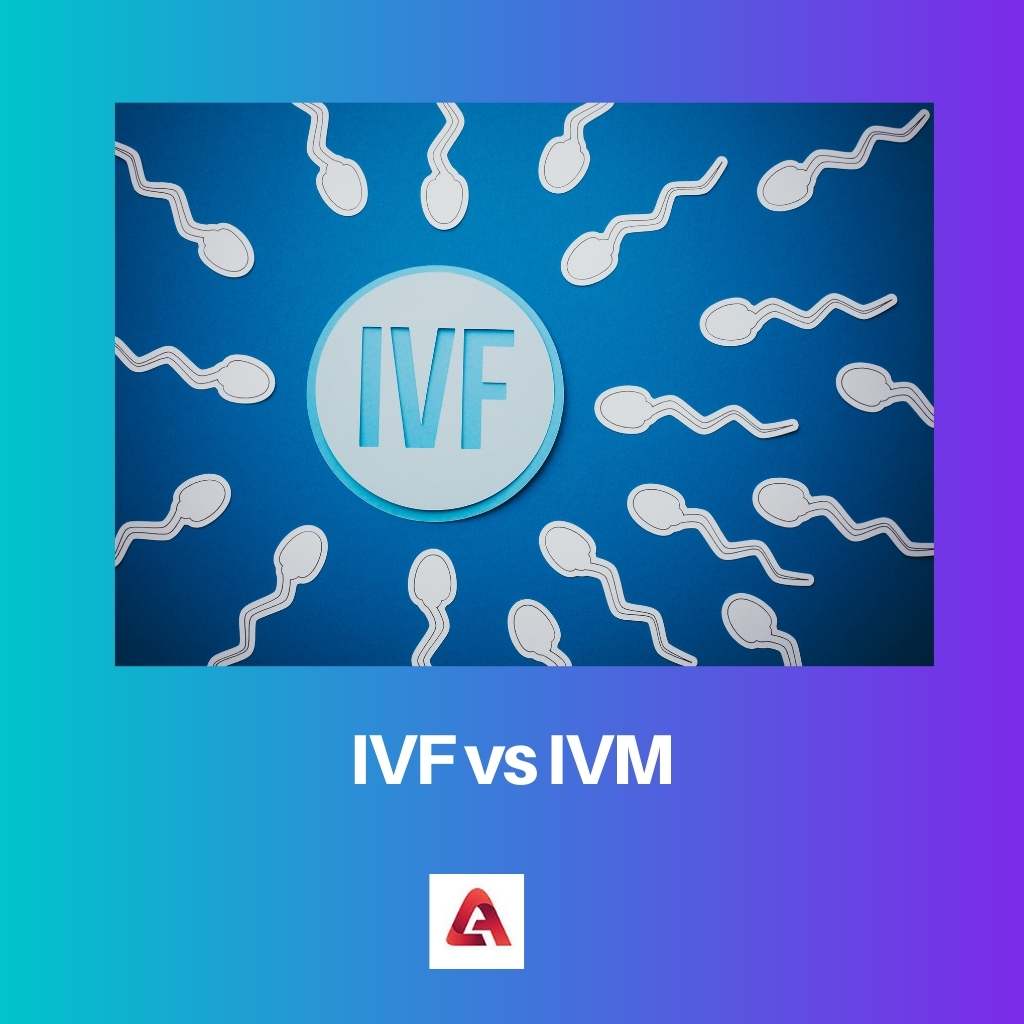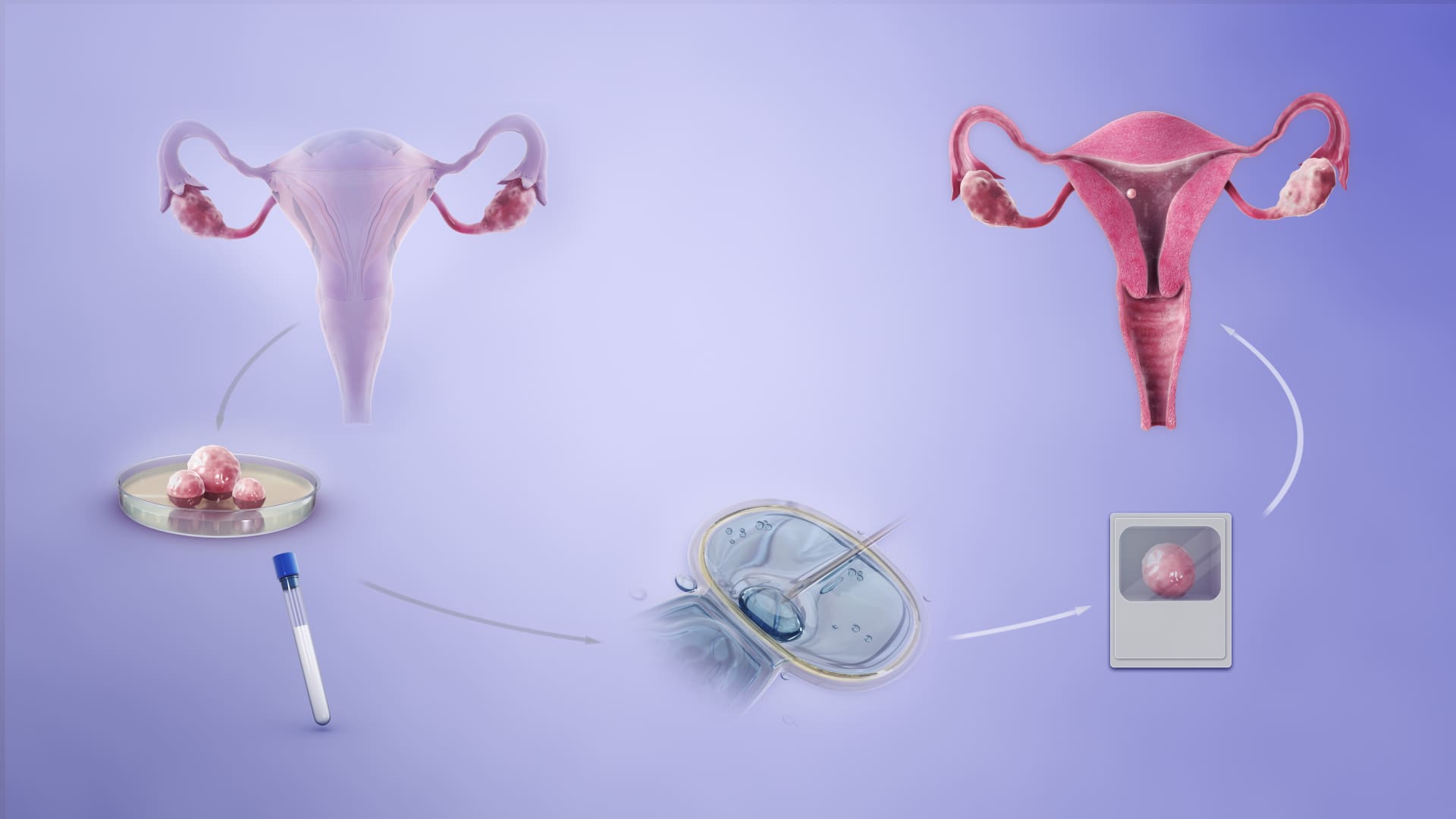There are hundreds of reproductive technology available nowadays. IVF(In vitro fertilization) and IVM( In Vitro maturation) are different reproductive technologies.
Both of them are famous for reproductive technology. Both IVF and IVM are helpful for millions of people.
Key Takeaways
- IVF (In Vitro Fertilization) involves fertilizing eggs outside the body; IVM (In Vitro Maturation) matures immature eggs in a lab before fertilization.
- IVF requires hormone injections to stimulate egg production; IVM has less hormonal stimulation, reducing health risks.
- IVF has a higher success rate than IVM, but IVM is a newer, less invasive alternative for some patients.
IVF vs. IVM
IVF is a fertility treatment where eggs are removed from the ovaries and fertilized with sperm in a laboratory dish, then transferred to the uterus to implant and develop into a pregnancy. IVM is a less invasive and lower-cost alternative to IVF, used to treat PCOS and irregular ovulation.

IVF stands for In Vitro Fertilization. Fertilization of the female egg and male sperm is called IVF. All the processes are in the Vitro culture or laboratory. It is called the ovulatory process.
In IVF, the eggs are removed from the ovaries and fertilized outside the human body. It is all done in In Vitro Culture. This process is called In Vitro Fertilization(IVF).
The fertilized egg is called a zygote which undergoes embryo development for two to six days. After the embryo culture, the zygote is implanted in the mother’s uterus for pregnancy.
In Vitro Maturation is the contrast process of In Vitro Fertilization. In IVM, the eggs are getting mature outside the human body. Women who can not undergo ovarian stimulation may have a chance to get pregnant by In Vitro Maturation.
It isn’t very easy when compared to In Vitro Fertilization. In Vitro Maturation has more disadvantages. It is an expensive one and needs more time. The immature oocytes from the women can be removed. It helps for the better maturation of oocytes.
Comparison Table
| Parameters of comparison | IVF | IVM |
|---|---|---|
| Ultrasounds needed | IVF needs 4 ultrasounds | IVM needs 0-2 blood tests |
| Blood tests | IVF need 6-10 blood test | IVF needs 6-10 blood test |
| Average success rate | The average success rate of IVF is above 46% | The average success rate of IVM is 35-40% |
| Main Process | Fertilization is the primary process | Maturation is the primary process |
| Stands for | IVF stands for In Vitro Fertilization | IVM stands for In Vitro Maturation |
What is IVF?
Infertility is a big issue among couples looking to raise a child. IVF is a solution for infertility; it works by assisted reproductive technology.
Sometimes the surrogate is not the original mother of the resulting child. Depending on the women’s health, the IVF treatment and the cost and availability also vary.
The pregnancy term also varies on the IVF treatment. Louise Brown was the first child born by IVF in 1978. In Louise Brown’s case, no stimulation is done; instead, they follow the natural IVF cycle for better results.
Using this IVF method and egg donation can make pregnancy possible. Around eight million children are born through In Vitro Fertilization.
The term “in vitro” is a Latin term that means “in the glass.” Doing things in culture or laboratory is called In Vitro Fertilization.
The babies born by IVF are called test-tube babies. In Vitro, fertilization can be found to overcome the female infertility range.
In IVF, no drugs are used for the stimulation of the ovaries. But still, for the suppression process, they use certain drugs. Frozen embryo transfer, ovarian hyperstimulation, embryo cryopreservation, and embryo transfer are the primary steps of IVF.
Around two months are taken for a single cycle of In Vitro Fertilization. The administration process in IVF is quite a discomfort for the women who undergo IVF.

What is IVM?
In Vitro Maturation is not a healthy technique. The In Vitro Maturation culture is rich in gonadotrophin. When compared to IVF, IVM has no birth rates.
If a family has estrogen-associated thrombus, IVM causes severe cardiovascular disease. The IVM is a part of IVF. In biology, the IVM is called Oocyte In Vitro Maturation.
Diminished egg reserve or polycystic ovarian syndrome (PCOS) are the reasons for not getting pregnant. They may block the maturity of the eggs.
The IVM involves eight different steps. Initially, the blood test is done to detect any available blood-related problems. During the third day of the period, an ultrasound is performed.
After confirming the presence of eggs, chronic human gonadotropin is injected. The HCG will induce the ovulation process. After 36 hours, the immature eggs present in the womb are removed.
The immature eggs are placed in the culture to get matured. The culture contains Cumulin and c-AMP.
In IVM culture, the immature eggs are getting matured. The matured egg undergoes the fertilization process. In fertilization, intracytoplasmic sperm injection is done.
It left for five to six days to develop. The embryo is transferred to women after administering enough hormones. It is implanted into the uterus. It takes one to two weeks to confirm the pregnancy.
Main Differences Between IVF and IVM
- In IVF, the fertilization of women’s eggs with men’s sperm is done. In IVM, the maturation of eggs is done.
- IVF is a large procedure, whereas IVM is a small procedure.
- IVF stands for In Vitro Fertilization, whereas IVM stands for In Vitro Maturation.
- When compared to IVF, IVM needs less medical care and medications.
- The average success rate of IVF is above 46%, whereas the average success rate of IVM is 35-40%.

- https://www.sciencedirect.com/science/article/pii/S1472648310606992
- https://www.sciencedirect.com/science/article/pii/0378432096015308

It is remarkable how far scientific advances have come to address fertility and reproductive issues. Both IVF and IVM offer hope to many people.
It is good to have options, but the disadvantages of IVM are clear. I believe IVF is the superior choice, given its higher success rate.
IVM seems to have potential as a less invasive alternative, but IVF’s higher success rate cannot be ignored. People should carefully choose what best suits them.
Both IVF and IVM are helping many people in their reproductive journey. It’s great to see the two options available for people who have different needs and circumstances.
The extensive process and disadvantages of IVM make IVF a more promising option from a scientific perspective.
These technologies are having a significant impact, but the health risks and success rate differences must be carefully weighed.